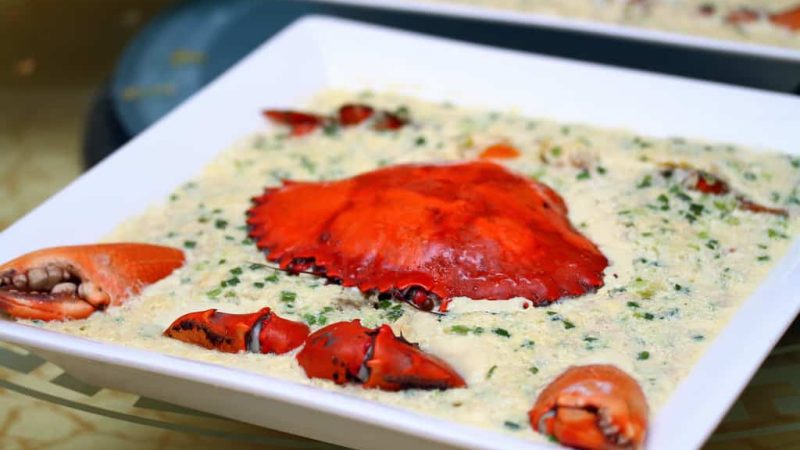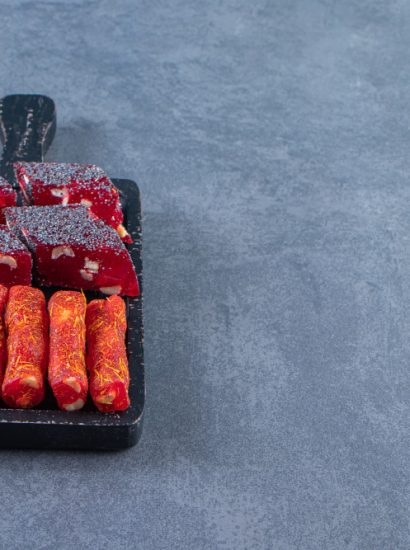Singapore’s culinary landscape is a melting pot of global cuisines, and among its most luxurious and intriguing Chinese dishes is the legendary Buddha Jump Over the Wall. Known for its rich history, lavish ingredients, and aromatic complexity, this Fujian delicacy has become a prized feature on festive menus across Singapore—particularly during Chinese New Year.
In this in-depth article, we’ll explore the origins of the dish, its authentic ingredients, how it’s prepared, its cultural relevance, and the best places in Singapore to try it. Whether you’re a food enthusiast, a tourist exploring the Lion City, or someone planning a special dinner, this guide has everything you need to know.
The Origins of Buddha Jump Over the Wall
Buddha Jump Over the Wall, or Fo Tiao Qiang (佛跳墙), is a traditional Chinese delicacy that hails from Fujian Province in China. The dish dates back to the Qing Dynasty (1644–1912) and is often attributed to a chef from Fuzhou who accidentally invented the recipe when trying to create a nourishing stew for a scholar.
The name comes from a Chinese legend: the aroma of the dish was so powerful and enticing that it allegedly caused a Buddhist monk to leap over his temple wall to try it—despite his vegetarian vows.
Originally crafted for royalty and the elite, the dish became a staple at banquets, weddings, and imperial tables. Today, it remains a symbol of wealth, health, and celebration.
Luxurious Ingredients: What Goes into the Dish?
Part of what makes Buddha Jump Over the Wall so revered is its incredible list of premium ingredients. The dish can include up to 30 different components, each chosen for its flavor, texture, and health benefits.
Common Ingredients Include:
- Abalone – prized for its chewy texture and subtle sweetness
- Sea cucumber – high in collagen and often used in Chinese medicinal cooking
- Shark fin (less common now due to ethical concerns)
- Dried scallops (conpoy) – rich in umami flavor
- Jinhua ham – a type of Chinese dry-cured ham used for depth
- Fish maw – known for its gelatinous texture and high protein
- Ginseng, goji berries, and red dates – added for nourishment and aroma
- Chinese mushrooms – for earthy tones
- Chicken and pork tendons – slow-cooked to add body to the broth
The preparation is time-consuming, often requiring 24 to 72 hours of soaking, simmering, and layering to achieve the signature complexity of flavor.
The Preparation Process: A Culinary Art
The preparation of Buddha Jump Over the Wall is an intricate ritual that tests a chef’s patience and skill.
- Soaking and Prepping – Dried ingredients like abalone, sea cucumber, and mushrooms must be soaked and cleaned over several days.
- Blanching – Proteins like pork and chicken are blanched to remove impurities.
- Layering – Ingredients are carefully layered in a clay pot to allow gradual flavor extraction.
- Sealing and Simmering – The pot is often sealed with lotus leaves or dough and slow-cooked for 6–12 hours.
- Serving – The dish is traditionally served in a sealed pot that’s opened at the table for maximum aromatic impact.
The final broth is deeply savory, rich in umami, and aromatic enough to fill a room—making its legendary name quite literal.
Symbolism and Cultural Significance
Beyond its taste, Buddha Jump Over the Wall carries significant cultural symbolism.
- Wealth and Status: The use of expensive ingredients makes it a luxury item, often reserved for celebrations or honored guests.
- Health and Longevity: The medicinal herbs and high-protein ingredients symbolize health and vitality.
- Community and Sharing: It is typically served in large pots, reinforcing the values of sharing and unity during family gatherings.
In Singapore, the dish is especially popular during Chinese New Year, where it’s seen as a sign of prosperity and abundance.
Modern Interpretations & Adaptations
Today, Buddha Jump Over the Wall has been reimagined in many ways across Asia and Singapore. While traditional versions still dominate, modern chefs are creating more accessible and innovative renditions.
Variations in Singapore:
- Mini pots for solo diners
- Vegetarian versions using mushrooms and soy-based protein
- Frozen or takeaway options for at-home enjoyment
- Contemporary fusions—some restaurants pair it with truffle oil or serve it with rice and noodles
Despite innovations, the core principle remains: to deliver a multi-layered, luxurious dining experience.
Where to Try Buddha Jump Over the Wall in Singapore
Singapore is home to some of the finest renditions of Buddha Jump Over the Wall. Here are top-rated places to experience it:
1. Li Bai Cantonese Restaurant (Sheraton Towers)
A classic setting for luxury Cantonese dining. Their Buddha Jump Over the Wall includes abalone, fish maw, sea cucumber, and more. Expect prices to start from S$108++.
2. Imperial Treasure Fine Chinese Cuisine
Known for authenticity, this upscale restaurant offers a double-boiled version in individual pots. Prices range from S$98 to S$168, depending on ingredients.
3. Peach Garden
A popular choice for family reunions and festive meals. Their version is more affordable and available in set menus starting from S$88++ per person.
4. Yan Ting (St. Regis)
Renowned for impeccable service and presentation. Their interpretation is rich, featuring wild mushrooms, pork tendon, and premium seafood.
5. Roland Restaurant
A more casual yet traditional take. Their mini version is available for S$18.80, ideal for first-timers or those dining solo.
Price Guide: What to Expect
Due to its ingredient profile, Buddha Jump Over the Wall is considered a luxury dish, and prices can vary significantly.
| Type | Price Range |
| Restaurant Fine Dining Pot | S$98 – S$198 |
| Mid-Range Restaurant | S$40 – S$80 |
| Mini Individual Pot | S$18 – S$30 |
| Takeaway / Frozen Packs | S$25 – S$50 |
Budget Tips:
- Visit during Chinese New Year promotions.
- Try lunchtime sets that include mini portions.
- Check for takeaway specials—some restaurants offer discounted prices for frozen versions.
Conclusion
Buddha Jump Over the Wall is more than just soup—it’s a celebration of heritage, opulence, and flavor. From its Qing dynasty origins to the tables of Singapore’s top restaurants, this dish continues to captivate diners with its rich aroma, nourishing properties, and symbolic value.
Whether you’re enjoying it in a luxury hotel or tasting a mini version at your neighborhood Chinese eatery, every bite tells a story steeped in tradition and culinary excellence. If you haven’t tried it yet, make it a point to do so—especially when celebrating milestones or welcoming the Lunar New Year.
FAQs
1. What makes Buddha Jump Over the Wall so special?
The dish is special due to its blend of rare, luxurious ingredients and the time-intensive preparation process that creates a complex and unforgettable flavor.
2. Is shark fin still included in the dish?
Many modern versions omit shark fin due to ethical concerns. Always check the ingredient list or ask the restaurant if this matters to you.
3. Can I find a halal version of the dish in Singapore?
Traditional versions include pork and alcohol-based broth, making them non-halal. However, some modern or home-based chefs offer halal-certified alternatives.
4. Is it suitable for vegetarians or vegans?
Traditional Buddha Jump Over the Wall is not vegetarian, but some innovative chefs are now creating plant-based versions using mushrooms and herbal broths.
5. When is the best time to try this dish in Singapore?
Chinese New Year is the most popular time, but many restaurants serve it year-round, especially at fine dining Cantonese establishments.
Also read: Teppei Restaurant Menu | Full Menu with Prices & Dishes









